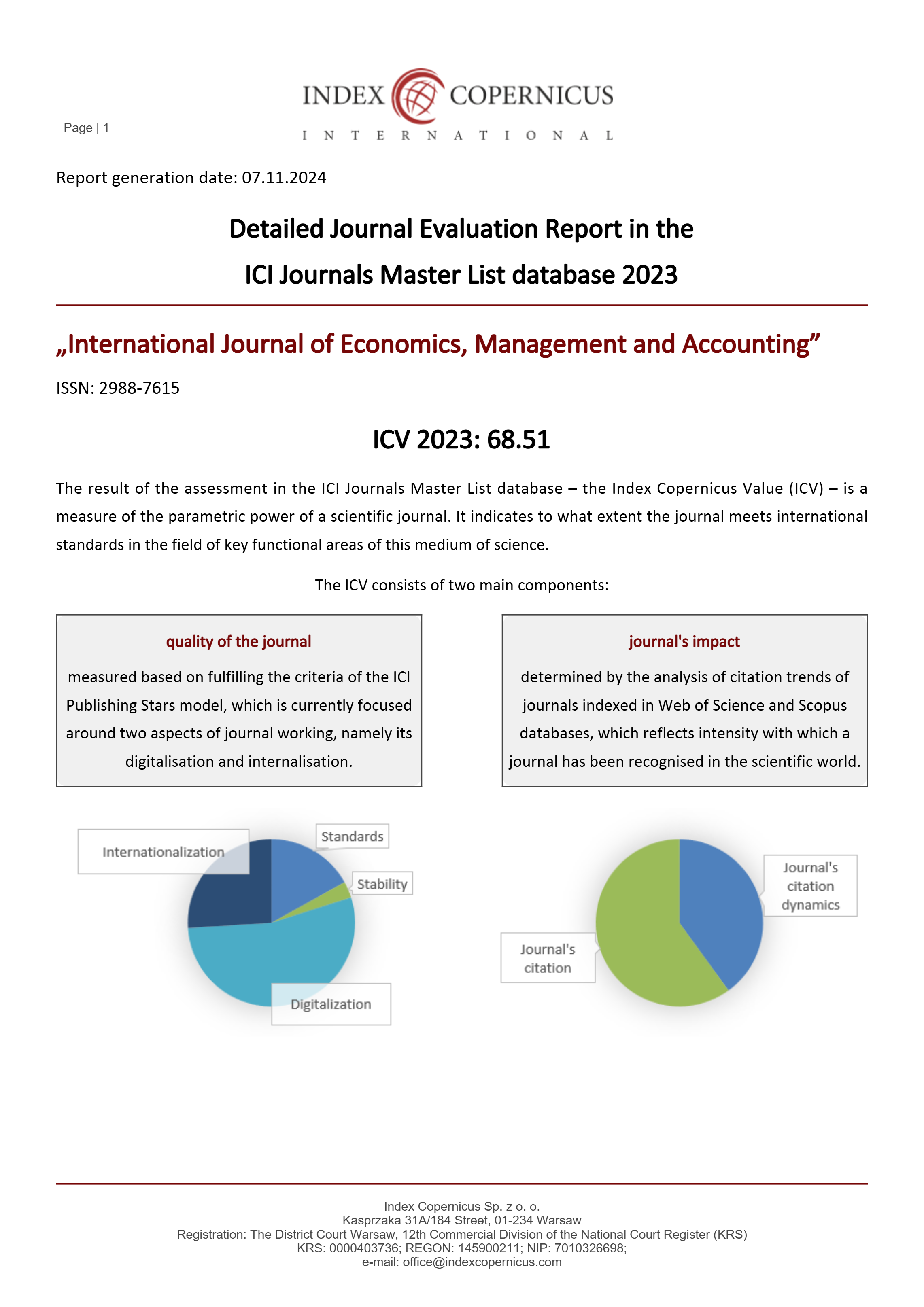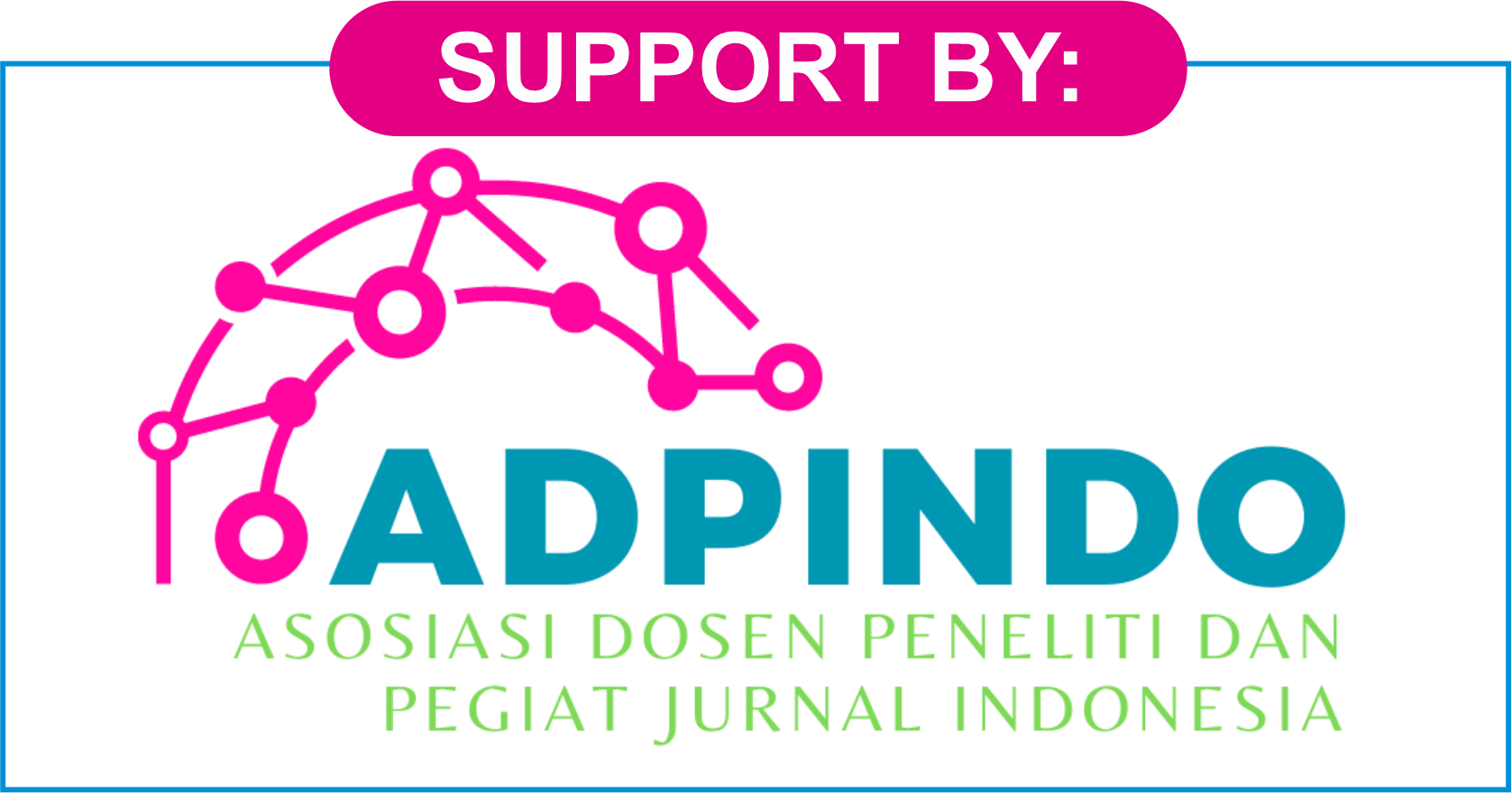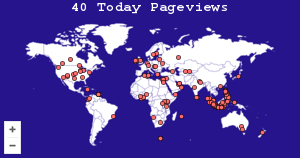The Influence of Financial Literacy and Risk Perception on Interest in Using Paylater in Communities of Waru, Sidoarjo District
DOI:
https://doi.org/10.47353/ijema.v1i11.117Keywords:
financial literacy, risk perception, paylaterAbstract
Paylater is a financial product, and its use can be influenced by a person's literacy level. A person's interest in using a financial product can be influenced based on an understanding of financial concepts called financial literacy and also knowledge of these risks.This research is descriptive research with quantitative methods.The results of this research state that the variables financial literacy (X1) and risk perception (X2), both partially and simultaneously, have a positive and significant effect on interest in using (Y) paylater in the people of Waru, Sidoarjo District.
Downloads
References
Atkinson A, Messy F-A. 2012. Measuring Financial Literacy: Results of the Oecd Infe Pilot Study. OECD Work Pap Financ Insur Priv Pensions. (15):1–73.
Baker H, Filbeck G, Ricciardi V. 2017. Financial Behavior: players, services, products, and markets. New York: Oxfod University Press.
Bhushan P, Medury Y. 2014. An empirical analysis of inter linkages between financial attitudes, financial behaviour and financial knowledge of salaried individuals. Indian J Commer Manag Stud. 5(3):1161–1201. www.scholarshub.net.
Fessler P, Silgoner M, Weber R. 2020. Financial knowledge, attitude and behavior: evidence from the Austrian Survey of Financial Literacy. Empirica. 47(4):929–947. https://doi.org/10.1007/s10663-019-09465-2.
Hasanah, U., & Riyanti, B. P. (2019, May). The Influence of Psychological Capital and Risk-Taking Behavior on the Success of Entrepreneurial Businesses of Minang Ethnic Women Who Utilize E-Commerce. UNP RAP Journal, 10(1), 120-133. doi: https://doi.org/10.24036/rapun.v10i1.105020
Laily N. 2016. The Influence of Financial Literacy on Student Behavior in Managing Finances. J Account Bus Educ. 1(4). https://doi.org/10.26675/jabe.v1i4.6042.
Lantara IWN, Kartini NKR. 2015. Financial literacy among university students: empirical evidence from Indonesia. J Indonesia Econ Bus. 30(3):247–256. https://doi.org/10.22146/jieb.v30i3.10314
Margaretha F, Sari SM. 2015. Determining Factors of Financial Literacy Levels of Credit Card Users in Indonesia. J Accounting and Investment. 16(2):132–144. https://doi.org/10.18196/jai.2015.0038.132-144.
OECD (The Organization for Economic Cooperation and Development). 2018. OECD/INFE Toolkit for Measuring Financial Literacy and Financial Inclusion. :1–47. [diunduh 2023 Nov 19]. Tersedia pada: https://www.oecd.org/financial/education/2018-INFE-FinLit-MeasurementToolkit.pdf
Prasetya H, Putra SE. 2020. The influence of perceived ease of use, benefits and risks on interest in using electronic money in Surabaya. J Din Business Econ. 17(2):151–158. https://doi.org/10.34001/jdeb.v17i2.1340.
Rumayya, Sari, F. R., Wahyuni, E., Rohman, M. S., Arini, H. R. B., & Agusti, K. S. (2020). Market Perception of Utilizing Paylater Payment Features.
Servon, L. J., & Kaestner, R. (2008). Consumer financial literacy and the impact of online banking on the financial behavior of lower-income bank customers. Journal of Consumer Affairs, 42(2), 271-305
Banking Regulation Research Team B. 2002. Internet banking in Indonesia. Bul Economics, Monetary and Banking. 5(1):37–64. https://doi.org/10.21098/bemp.v5i1.304.
Utami ARH. 2020. The influence of perceived ease, usefulness and trust on interest in using e-commerce. Prism (Accounting Student Research Platform). 1(6):79–93.
Wilson, D., & Murray-Webster, R. (2017). Understanding and Managing Risk Attitude (2nd ed.). London: Routledge. doi: https://doi.org/10.4324/9781315235448
Downloads
Published
How to Cite
Issue
Section
License
Copyright (c) 2024 Amin Sadiqin

This work is licensed under a Creative Commons Attribution 4.0 International License.











